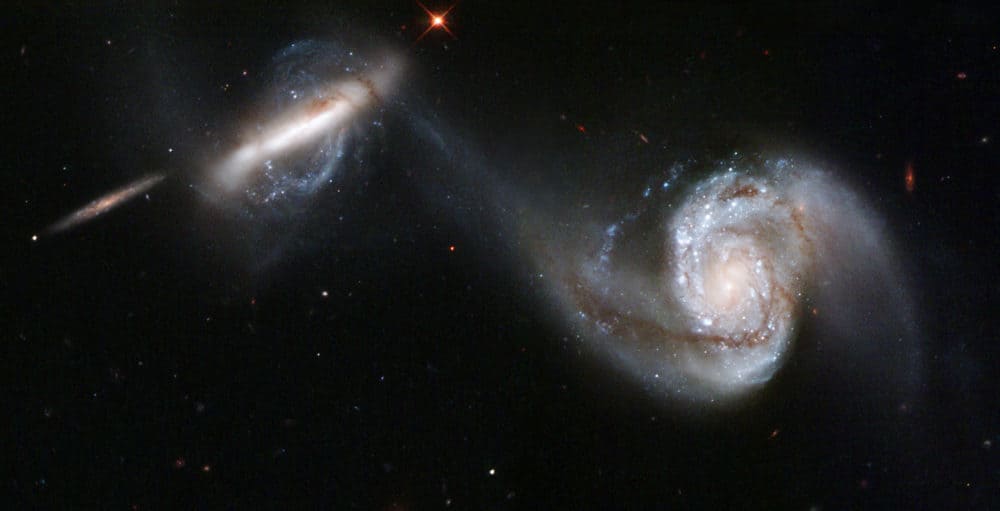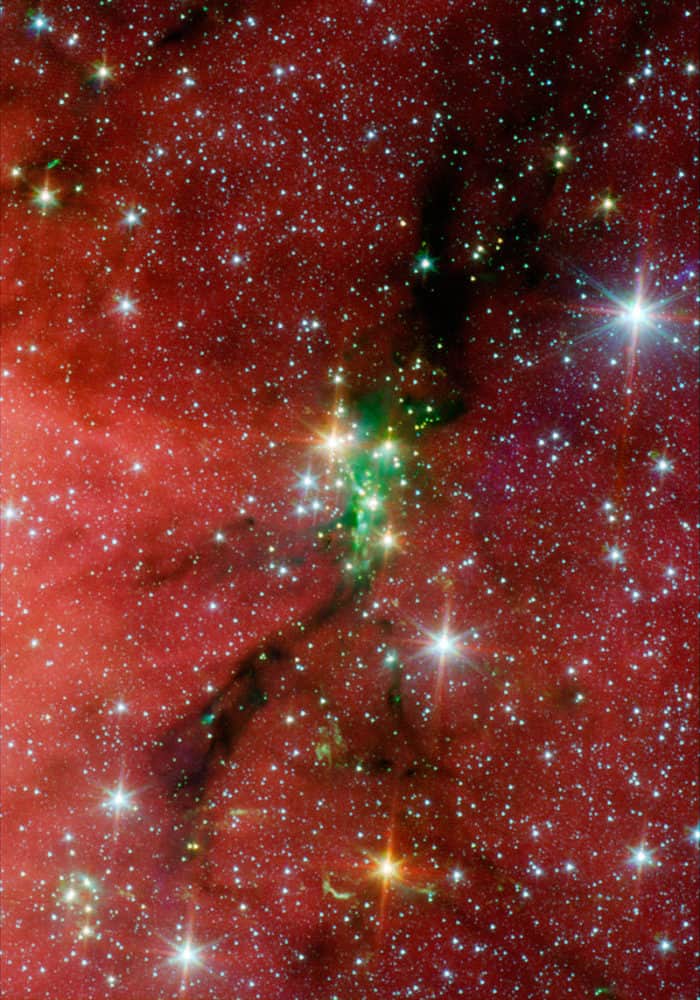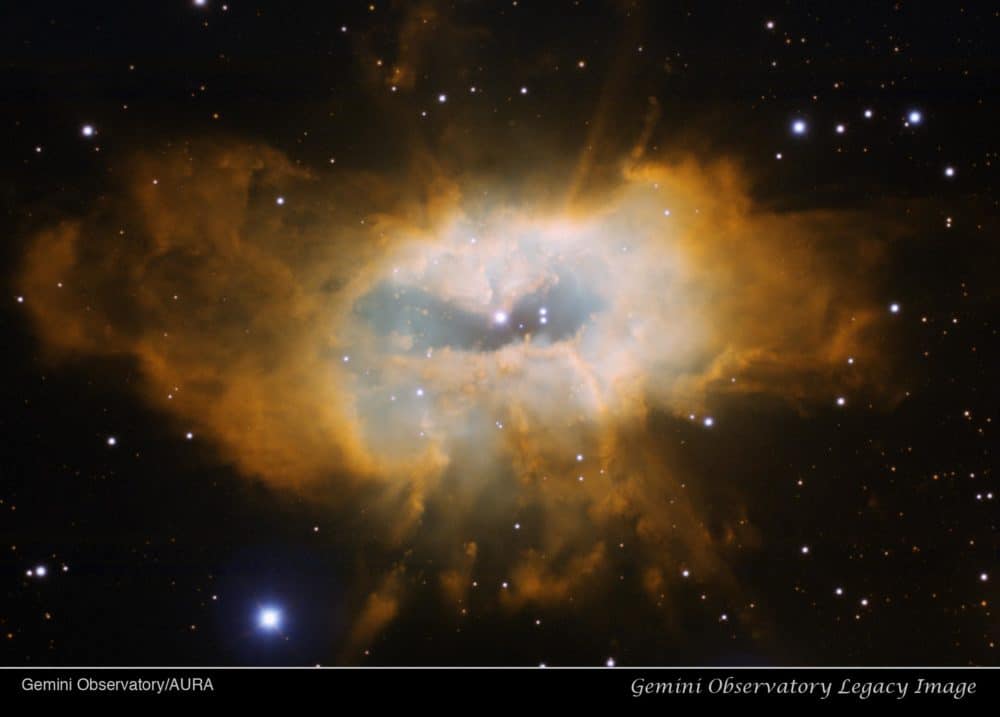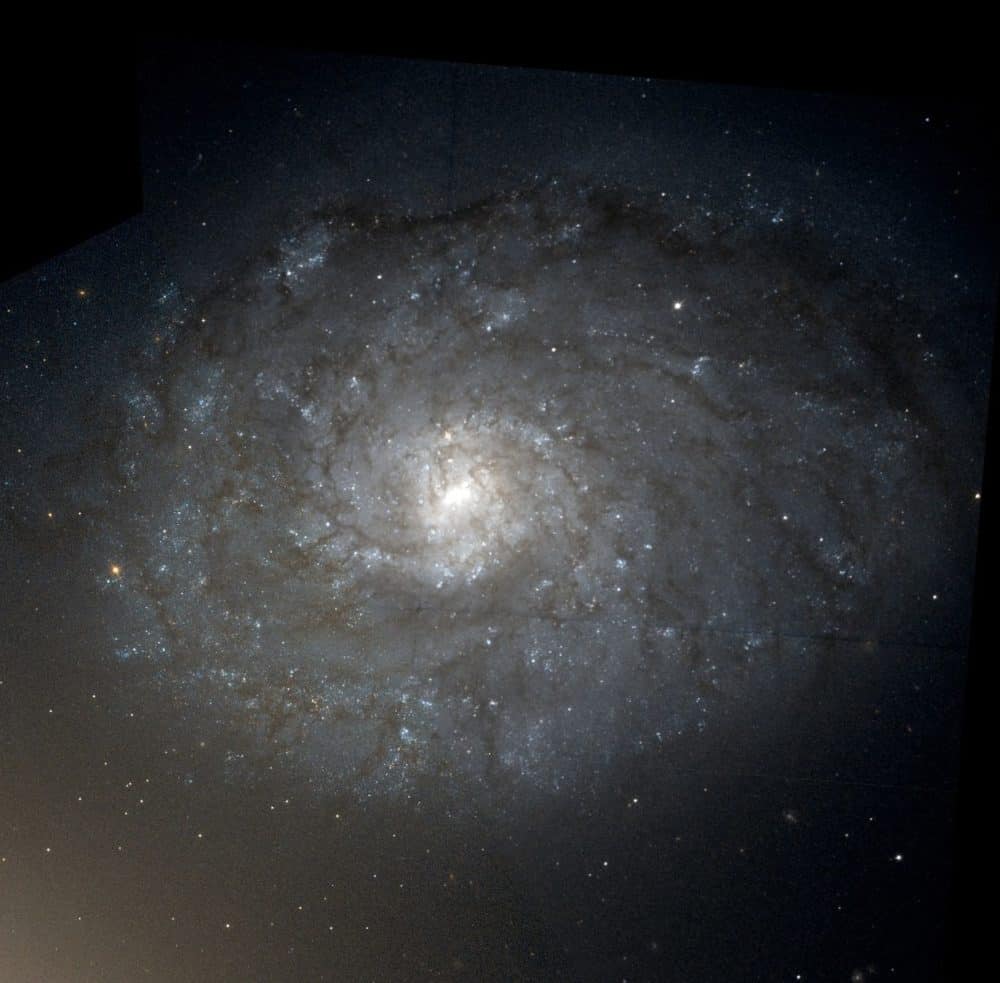Blog
Arp 87 (also known as NGC 3808) is a pair of two interacting galaxies, NGC 3808A and NGC 3808B. They are situated in the Leo constellation. NGC 3808A, the brighter, is a peculiar spiral galaxy, while NGC 3808B is an irregular galaxy.
The two galaxies were discovered on 10 April 1785 by William Herschel. The two are located about 330 million light-years (100 megaparsecs) away from the Earth. Arp 87 was observed by the Hubble Telescope in 2007, which revealed massive clouds of gas and dust flowing from one galaxy to another. Additionally, both galaxies appear to have been distorted.
more...
Sam Tshabalala is a South African singer and guitarist . June 27th 1955.
Singer and guitarist of the band The Malopoets, the first South African black musicians performing at the Market Theater in Johannesburg , he is considered a hero of cultural resistance to the apartheid regime then in place in his country.
For more than 20 years, he lives in France .
His music combines elements of the musical and choreographic traditions of black South African cultures with jazz , funk or reggaerhythms. His songs tell the often painful story of South Africa, the hopes of the people and the life in the townships , in many languages among which are Zulu , shangaan , tswana and English. The melodies of these songs are paradoxically sweet and joyful.
more...Rahul Dev Burman (27 June 1939 – 4 January 1994) was an Indian music director who is regarded as one of the most influential composers of the Indian film industry. From the 1960s to the 1990s, Burman composed musical scores for 331 films. Burman did major work with Asha Bhosle (his wife) and Kishore Kumar and scored many of the songs that made these singers famous. He has also scored many songs sung by Lata Mangeshkar. Nicknamed Pancham, he was the only son of the composer Sachin Dev Burman.
He was mainly active in the Hindi film industry as a composer, and also provided vocals for a few compositions. He served as an influence to the next generation of Indian music directors, and his songs continue to be popular in India and overseas.
Burman was born to the Bollywood composer/singer Sachin Dev Burman and his lyricist wife Meera Dev Burman (née Dasgupta), in Calcutta. Initially, he was nicknamed Tublu by his maternal grandmother, although he later became known by the nickname Pancham. According to some stories, he was nicknamed Pancham because, as a child, whenever he cried, it sounded in the fifth note (Pa), G scale, of music notation. The word Panchammeans five (or fifth) in Bengali, his mother tongue. Another theory says that the baby was nicknamed Pancham because he could cry in five different notes. Yet another version is that when the veteran Indian actor Ashok Kumar saw a newborn Rahul uttering the syllable Pa repeatedly, he nicknamed the boy Pancham.
more...George Braith (born George Timothy Braithwaite on June 26, 1939) is a soul-jazz saxophonist from New York.
Braith is known for playing multiple horns at once, a technique pioneered by Roland Kirk. Braith is credited with the invention of the Braithophone, two different horns (straight alto and soprano) mended together by extensions, valves and connections.
Braith is featured in a mosaic in the 72nd street station of the Second Avenue Subway in the New York City Subway system.
Of Braith’s album Musart Thom Jurek at AllMusic wrote, “Musart is his masterpiece; it is one of the most diverse yet refined albums to come out of the ’60s, and has few peers even today.”
more...St. Elmo Sylvester Hope (June 27, 1923 – May 19, 1967) was an American jazz pianist, composer, and arranger, chiefly in the bebop and hard bopgenres. He grew up playing and listening to jazz and classical music with Bud Powell, and both were close friends of another influential pianist, Thelonious Monk.
Hope survived being shot by police as a youth to become a New York-based musician who recorded with several emerging stars in the early to mid-1950s, including trumpeter Clifford Brown, and saxophonists John Coltrane, Lou Donaldson, Jackie McLean, and Sonny Rollins. A long-term heroin user, Hope had his license to perform in New York’s clubs withdrawn after a drug conviction, so he moved to Los Angeles in 1957. He was not happy during his four years on the West Coast, but had some successful collaborations there, including with saxophonist Harold Land.
More recordings as leader ensued following Hope’s return to New York, but they did little to gain him more public or critical attention. Further drug and health problems reduced the frequency of his public performances, which ended a year before his death, at the age of 43. He remains little known, despite, or because of, the individuality of his playing and composing, which were complex and stressed subtlety and variation rather than the virtuosity predominant in bebop.
Elmo Hope was born on June 27, 1923, in New York City. His parents, Simon and Gertrude Hope, were immigrants from the Caribbean, and had several children. Elmo began playing the piano aged seven. He had classical music lessons as a child, and won solo piano recital contests from 1938. Fellow pianist Bud Powell was a childhood friend; together, they played and listened to jazz and classical music. Hope attended Benjamin Franklin High School, which was known for its music program. He developed an excellent understanding of harmony, and composed jazz and classical pieces at school.
At the age of 17, Hope was shot by a New York policeman. He was taken to Sydenham Hospital, where doctors reported that the bullet had narrowly missed his spine. Six weeks later, after Hope had been released from the hospital, he appeared in court, charged with “assault, attempted robbery and violation of the Sullivan Law“. The police officers involved testified in court that Hope had been part of a group of five involved in a mugging. None of the other four, or any of the three alleged white victims, was identified by police; Hope stated that he had been running away with other passers by after police started shooting, and was hit while trying to enter a hallway. The judge freed Hope of all the charges, after which Hope’s attorney described the shooting as an “outrage”, and the charges as “an attempted frameup”.
more...The Serpens South star cluster is a relatively dense group of more than 600 young stars, dozens of which are protostars just beginning to form.The cluster is situated in the southern portion of the Serpens cloud (adjacent to the star-forming region known as W40). The stars are embedded in a dense filament of interstellar gas, which is part of the giant molecular cloud that has given rise to the cluster of young stars in W40. This entire complex is located at a distance of 1420 light-years (436 pc) from the Earth, and is approximately the same distance as the Serpens Main cluster.
The cluster was uncovered by NASA’s Spitzer Space Telescope. This discovery was made possible by the infrared capabilities of this space telescope, which were necessary because the stars are completely obscured by interstellar dust in the Serpens cloud at visible wavelengths. Hundreds of young stellar objects have been detected at mid-infrared objects using these data. X-ray observations by NASA’s Chandra X-ray Observatory have also provided detailed information about the stellar cluster. And, the region has served as a laboratory for radio-wavelength studies of star formation in dense molecular filaments.
The discovery of Serpens South is a direct result of the Gould’s Belt Legacy project at the Harvard-Smithsonian Center for Astrophysics, which aims to study all prominent star-forming regions within about 1,600 light-years of Earth. The Gould Belt is a ring of molecular clouds and associated star-forming regions first described by astronomer Benjamin Gould in 1879. Although the Serpens Molecular cloud is too distant to formally be considered a member of the Gould Belt, it is often included in Gould Belt surveys.
more...Nicole Saba (Arabic: نيكول سابا; born 26 June 1974 is a singer and actress from Lebanon.
From 1998-2001, Nicole Saba was a member of the Lebanese pop group The 4 Cats, She replaced “Roula Bahnam” who officially shot with the band in their first video “Ashra HdashEtnash”, Nicole released 2 albums with the 4Cats “Tic – Tick” and “Layl Nhar” and shot 4 video clips with them “Yanassini, Kan Ezaman, Layl Nhar and Maba2a Eida” and shot the band’s commercial for LUX Shower Gel. Then embarked on a solo singing as well as an acting career. Her debut album was released in 2004, and her first film came out in 2003. She has subsequently had success with additional roles in Egyptian-made films.
Nicole was given the award for the best singer in 2004 by Sayidaty magazine.
https://www.youtube.com/watch?v=n_40rID0Egk
more...Reginald “Reggie” Workman (born June 26, 1937 in Philadelphia, Pennsylvania) is an American avant-garde jazz and hard bop double bassist, recognized for his work with both John Coltrane and Art Blakey.
He is currently a professor at The New School for Jazz and Contemporary Music in New York City, and is a member of the group, Trio 3, with Oliver Lake and Andrew Cyrille.
Workman has been a resident of Montclair, New Jersey
https://www.youtube.com/watch?v=W3lDcLUnpJI
more...
Big Bill Broonzy (born Lee Conley Bradley, June 26, 1903 – August 14, 1958) was an American blues singer, songwriter and guitarist. His career began in the 1920s, when he played country blues to mostly African-American audiences. Through the 1930s and 1940s he successfully navigated a transition in style to a more urban blues sound popular with working-class African-American audiences. In the 1950s a return to his traditional folk-blues roots made him one of the leading figures of the emerging American folk music revival and an international star. His long and varied career marks him as one of the key figures in the development of blues music in the 20th century.
Broonzy copyrighted more than 300 songs during his lifetime, including both adaptations of traditional folk songs and original blues songs. As a blues composer, he was unique in writing songs that reflected his rural-to-urban experiences.
Born Lee Conley Bradley, he was one of the seventeen children of Frank Broonzy (Bradley) and Mittie Belcher. The date and place of his birth are disputed. Broonzy claimed to have been born in Scott, Mississippi, but a body of emerging research compiled by the blues historian Robert Reisman suggests that he was born in Jefferson County, Arkansas. Broonzy claimed he was born in 1893, and many sources report that year, but family records discovered after his death suggested that the year was 1903. Soon after his birth the family moved to an area near Pine Bluff, Arkansas, where Bill spent his youth. He began playing music at an early age. At the age of 10 he made himself a fiddle from a cigar box and learned how to play spirituals and folk songs from his uncle, Jerry Belcher. He and a friend, Louis Carter, who played a homemade guitar, began performing at social and church functions. These early performances included playing at “two-stages”: picnics where whites and blacks danced at the same event, but with different stages for blacks and whites.
more...Gemini Legacy image of the complex planetary nebula Sh2-71 as imaged by the Gemini Multi-Object Spectrograph on Gemini North on Mauna Kea in Hawai‘i. The long-assumed central star is the brightest star near the center, but some astronomers wonder if the much dimmer and bluer star (just to the right and down a bit) might be the parent of this beautiful object. The image is composed of three narrow-band images, and each is assigned a color as follows: H-alpha (orange), HeII (blue) and [OIII] (cyan). Each image is 15 minutes in duration, the field-of-view is 5.3 x 3.6 arcminutes, and the image is rotated 110 degrees clockwise from north up, east left.
Sh2-71 (Sharpless 71) is an unusual and complex planetary nebula located about 3,260 light-years away from Earth in the northern constellation of Aquila (the Eagle). It is embroiled in a bit of controversy over its “birth parents”.
Sh2-71 is the 71st object in a catalogue of nebulae originally assembled by the U.S. astronomer Stewart Sharpless of the US Naval Observatory in Flagstaff, Arizona. It is from his second catalogue, of 313 nebulae, published in 1959. (In fact there are more than 313 objects as subsequent research has shown that some of the Sharpless nebulae consist of more than one object.)
Planetary nebulae represent the final brief stage in the life of a medium-sized star like our Sun. While consuming the last of the fuel in its core, the dying star expels a large portion of its outer envelope. This material then becomes heated by the radiation from the stellar remnant and radiates, producing glowing clouds of gas. They are called “planetary” nebulae because early observers thought they looked like planets; but they don’t have anything to do with planets at all.
Astronomers long assumed that Sh2-71 formed from the death throes of the brightest star (a binary system) which lies very close to the center of the nebula’s gas shell. But new observations have shown that the nature of a dimmer, bluer star – just to the right, and a bit lower than the bright central star – might provide a better fit for the nebula’s “birth parent.”
The uncertainty arises from the fact that the brighter central star doesn’t appear to radiate enough high-energy (ultraviolet) light to cause the surrounding gas to glow as intensely as it does, whereas the dimmer, bluer star likely does. On the other hand, the brighter star’s binary nature would help explain the nebula’s asymmetrical structure. Astronomers do not yet known if the dimmer, bluer star also has a companion.
Another unresolved issue is whether the brighter star’s unseen companion might be hot enough to excite the gas to glow. If so, this pair might be able to hold on to its parental connection to the nebula.
However, at the assumed distance to the nebula, the faint star has about the right brightness to be the fading remnant of the nebula’s progenitor star. Then again, the brighter binary star is an uncommon one that shows strong and broad hydrogen-alpha emission, which are seen in some planetary nebulae.
more...Carly Elisabeth Simon (born June 25, 1945) is an American singer-songwriter, musician, and children’s author. She first rose to fame in the 1970s with a string of hit records; her 13 Top 40 U.S. hits include “Anticipation” (No. 13), “You Belong To Me” (No. 6), “Coming Around Again” (No. 18), and her four Gold certified singles “Jesse” (No. 11), “Mockingbird” (No. 5, a duet with James Taylor), “You’re So Vain” (No. 1), and “Nobody Does It Better” (No. 2) from the 1977 James Bond film, The Spy Who Loved Me.
After a brief stint with her sister Lucy Simon as duo group the Simon Sisters, she found great success as a solo artist with her 1971 self-titled debut album Carly Simon, which won her the Grammy Award for Best New Artist, and spawned her first Top 10 single “That’s the Way I’ve Always Heard It Should Be“. She achieved international fame with her third album No Secrets which sat firmly at No. 1 on the Billboard 200 for five weeks and spawned the worldwide hit “You’re So Vain”, for which she received three Grammy nominations, including Record of the Year and Song of the Year. With her 1988 hit “Let the River Run“, from the film Working Girl, she became the first artist to win a Grammy Award, an Academy Award, and a Golden Globe Award for a song composed and written, as well as performed, entirely by a single artist.
Over the course of her career, Simon has amassed 24 Billboard Hot 100 charting singles, 28 Billboard Adult Contemporary charting singles, and won 2 Grammy Awards, from 14 nominations. AllMusic called her “one of the quintessential singer-songwriters of the ’70s”. She has a contralto vocal range, and has cited Odetta as a significant influence. She was inducted into the Songwriters Hall of Fame in 1994. In 1995 and 1998, respectively, she received the Boston Music Awards Lifetime Achievement and a Berklee College of Music Honorary Doctor of Music Degree. She was inducted into the Grammy Hall of Fame for “You’re So Vain” in 2004 and awarded the ASCAP Founders Award in 2012.
Simon was formerly married to singer-songwriter James Taylor. They have two children together, Sally Taylor and Ben Taylor, who are also musicians.
more...https://www.youtube.com/watch?v=bc8_wGUpK1w
more...Johnny Henry Smith II (June 25, 1922 – June 11, 2013) was an American cool jazz and mainstream jazz guitarist. He wrote “Walk, Don’t Run” in 1954. In 1984, Smith was inducted into the Alabama Jazz Hall of Fame.
Smith taught himself to play guitar in pawnshops, which let him play in exchange for keeping the guitars in tune. At thirteen years of age he was teaching others to play the guitar. One of Smith’s students bought a new guitar and gave him his old guitar, which became the first guitar Smith owned.
Smith joined Uncle Lem and the Mountain Boys, a local hillbilly band that travelled around Maine, performing at dances, fairs, and similar venues. Smith earned four dollars a night. He dropped out of high school to accommodate this enterprise.
Having become increasingly interested in the jazz bands that he heard on the radio, Smith gradually moved away from country music towards playing more jazz. He left The Mountain Boys when he was eighteen years old to join a variety trio called the Airport Boys.
An extremely diverse musician, Johnny Smith was equally at home playing in the famous Birdland jazz club or sight-reading scores in the orchestral pit of the New York Philharmonic. From Schoenberg to Gershwin to originals, Smith was one of the most versatile guitarists of the 1950s.
As a staff studio guitarist and arranger for NBC from 1946 to 1951, and on a freelance basis thereafter until 1958, he played in a variety of settings from solo to full orchestra and had his own trio, The Playboys, with Mort Lindsey and Arlo Hults.
Smith’s playing is characterized by closed-position chord voicings and rapidly ascending lines (reminiscent of Django Reinhardt, but more diatonic than chromatically-based). From those famous 1952 sides and into the 1960s he recorded for the Roost label, on whose releases his reputation mainly rests. Mosaic Records has issued the majority of them in an 8-CD set.
His most critically acclaimed record was Moonlight in Vermont (one of Down Beat magazine’s top two jazz records for 1952, featuring saxophonist Stan Getz).Initially released as a track on the 10-inch Lp “Jazz at NBC” (Roost 410), “Moonlight in Vermont” was later made the title track of a 1956 12-inch Lp.
His most famous musical composition is the tune “Walk Don’t Run“, written for a 1954 recording session as counter-melody to the chord changes of “Softly, as in a Morning Sunrise”. Guitarist Chet Atkins covered the tune, recording a neo-classical rendition of the song on the electric guitar for his Hi Fi in Focus album which preceded the Ventures’ hit by three years. He played his arrangement fingerstyle, including the bass notes A, G, F, and E which later became the basis for the Ventures’ arrangement. The musicians who became The Ventures heard the Atkins version, simplified it, sped it up, and recorded it in 1960. The Ventures’ version went to No. 2 on the Billboard Top 100 for a week in September 1960.
In 1957, Smith’s wife died in childbirth, along with his second child. He sent his young daughter to Colorado Springs, Colorado to be cared for temporarily by his mother, and the following year he left his busy performing career in New York City to join his daughter in Colorado. There, Smith ran a musical instruments store, taught music, and raised his daughter while continuing to record albums for the Royal Roost and Verve labels into the 1960s.
more...Borneo, Malaysia
more...https://www.youtube.com/watch?v=hCs9NUSdO8o
more...NGC 4647 is a spiral galaxy estimated to be around 63 million light-years away in the constellation of Virgo. It was discovered by astronomer William Herschel on March 15, 1784. NGC 4647 is listed along with Messier 60 as being part of a pair of galaxies called Arp 116; their designation in Halton Arp‘s Atlas of Peculiar Galaxies. The galaxy is located on the outskirts of the Virgo Cluster
The gas in NGC 4647 has been mildly disturbed. The galaxy’s location in the Virgo Cluster suggests that might it suffered an effect known as ram-pressure stripping caused by the intracluster medium. Another explanation may be hot gas in the halo of Messier 60. The hot gas in Messier 60 may have increased the pressure of gas on the eastern side of NGC 4647 through either ram-pressure striping or a bow-shock between the two galaxies causing the observed asymmetry of gas in the galaxy. The difficulty is that the galaxies would have to be so close that tidal forces from Messier 60 would cause the disk of NGC 4647 to get ripped apart.
more...More Posts
- Johnny Van Derrick
- Bill Heid
- Jess Stacy
- World Music Sona Dunoyan
- Daily Roots*Roots Radics
- Cosmos M20
- Ian Anderson
- Leo Fender
- Chuck Israels
- Trudy Pitts
- World Music Anna Hovhannisyan
- Daily Roots Horace Andy
- Temple Israel Erev Shabbat Service
- Cosmos Perseid ISS
- Jack DeJohnette
- Butch Warren
- Flamenco Fridays Reyes Carrasco
- Daily Roots Negus Roots Players
- A Picture Worth a Thousand Words
- Cosmos Comet 109P/Swift-Tuttle



